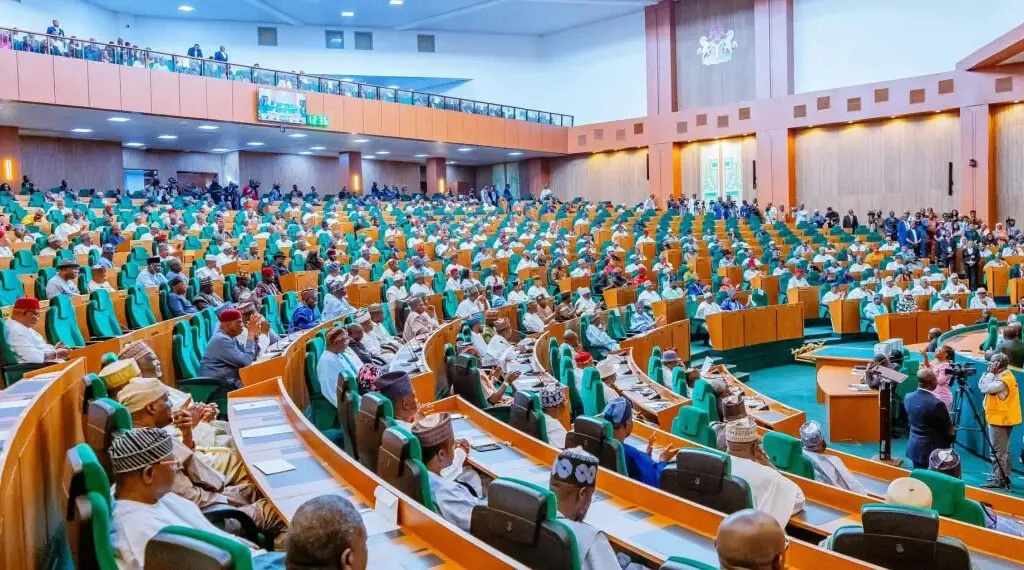Accidents, illnesses, injuries, deaths, loss time at work and other fatalities have become the hallmarks of workplaces in Nigeria. Although, it may not be necessary to bother the public with figures on the hazardous nature of different industries however, there is a consensus in the academic and industry that construction is the most hazardous industry.
Despite the foremost position of construction in records of accidents, illnesses, injuries, deaths, loss time and other fatalities, there is no existing formal and legal indigenous instrument (whether current or outdated) for regulating health and safety in the industry.
Studies are unanimous on the fact that the construction site is not a factory; therefore, the Factory Act applicable in Nigeria or anywhere else in the world does not cover construction sites. It is in recognition of these facts that the efforts of the members of the House of Representatives in Nigeria on the proposed Bill on Occupational Health and Safety Act of 2025 deserve high commendation from the public and in particular the stakeholders in the construction industry.
In the attempt to explain how Cancer has been lumped with malaria or leg fracture lumped with eye problem in treatment as it relates to the proposed bill, it is necessary to give an insight on how the proposed Bill came about. The Bill originated from the efforts of the Federal Ministry of Labour and Employment (FMLE) to review the existing Factory Act, Cap F1, LFN of 2004.
The move attracted the attention of stakeholders in the construction industry in particular the seven professional bodies who attempted to pioneer the establishment of the Construction Industry Development Board in Nigeria and who saw the proposed Bill as an opportunity to also have an instrument for regulating health and safety in the construction industry which has hitherto been neglected. The body proposed a separate Bill for the regulation of health and safety in the construction industry to the FMLE.
However, the Ministry neglected the suggestion of the stakeholders in the industry and decided to lump the construction industry with some other industries such as Factories, Farms, Mines and Corporate Offices. In continuation of the efforts, the FMLE organised a stakeholder forum on 28th-29th March, 2023 where the draft of the proposed Bill was presented to selected stakeholders including two stakeholders in the construction industry.
At the forum, the two stakeholders from the construction industry, observed that several provisions of the Bill were not in agreement with what obtained in the construction industry. Specifically, it was observed that the structure and procedures existing in the construction industry defer from what obtained in a factory, participants are equally different; same with processes and practices; same with operations, resources, methods, concepts and practices, same with laws, regulations, standards, codes and their enforcements.
It was particularly pointed out that some of the terminologies in the Factory Act have different meanings and some refers to different parties in construction documents and even regulations. Based on these observations, a new Bill named ‘Construction and Allied Works Health and Safety Act, 2023’ was proposed for the construction industry. It was specifically mentioned that the name of the proposed Bill by FMLE ‘Factory Act’ could not cover the construction industry.
Based on the suggestions made at the forum, the Federal Ministry of Labour and Employment assured stakeholders that a review would be done to reflect the suggestions. However, the Miniistry changed the name of the proposed Bill from Factory Act to Occupational Health and Safety Act of 2025 which was presented on the floor of the House of Representatives by the Hon. Deputy Speaker and six other members. Though, the name of the Bill has been changed to provide an umbrella for other industries, its substance in reference to factory remains the same.
Stakeholders have continuously emphasised that the construction site is quite different in all ramifications from the factory, farm, mine site or an office. First, construction is a fragmented industry with very many organised and formal parties and/or bodies inclusive of government agencies that perform distinct and separate duties or functions or services unlike the factory, farm or an office. Second, the products of construction are unique therefore, no two projects can be the same or homogenous as obtains in the factory.
Third, the production and procurement processes are one in construction as against seperated processes in the factory. The fusion of the two processes into one has several implications on the structure, organisation, procedures and parties involved and their duties and even the operations, resources, methods and safety regulations involved in a construction project. Four, construction site is an outdoor environment that is susceptible to constant changes: weather, topography, vegetation, water levels, soil characteristics, as against a factory or an office that is indoor and a controlled environment therefore, no two construction sites can be the same. Five, the deliverables in construction and the manner in which they are delivered are different from those of the factory with early enclosure being a common phenomenon.
Apart from this, no two deliverables in construction are the same. Six, construction operations are unique with no two projects having the same features, operations, participants, resources, documents, methods and environments as against the repitive nature of factory operations and products. The same is applicable to the resources involved in construction which are unique in the sense that no two projects employ the same resources as obtain in the factory. Furthermore, the planning and execution of construction operations which are done simultaneously are quite different from those of the factory.
The explanation above clearly indicates that construction is different in every respect from the factory, farm or office as proposed in the draft of the Bill. It is important to emphasise that in construction, the risks associated with a construction project are derived and defined from the nature of the project, the deliverables, the procurement approach, the nature of works or operations involved, the resources, parties, documents, methods to be adopted, workers, the project environment, etc which are quite different from what obtain in the factory.
The complex procurement procedures requires that risk identification commence from the inception of a project through the design, tendering and contract stages and be compiled into what is known as the Health, Safety and Environment (HSE) Plan for the project. The HSE Plan also contains the HSE Programmes which contain the numerous safety programmes to be implemented on site to mitigate the risks and make the site near if not fully accident free.
These safety programmes may include review or changes in scope of proposed resources: materials, workers, plants and equipment; operations; methods; processes; standards; codes and putting in place appropriate positive safety culture or climate where necessary. Safety culture centres on the workers engaged or to be engaged and construction operatives or labour remain the focus.
These safety considerations and the risks associated differ from one project to another therefore, just as in other project documents, each construction project requires its own unique HSE Plan and Programmes and no single Plan and Programme for a particular project can be suitable and effective in another. Furthermore, obligations on safety on parties involved in construction differ from what prevails in the factory. For example, the obligations to maintain a safe environment for construction is shared by the client and the contractor who is the employer of labour with the former having the obligation to fund safety plan and programmes and the latter having the obligation to implement what is funded.
The sharing of safety obligations explains the necessity for preparing HSE plan and programmes for every project for the contractor to cost them and include the cost in the tender. It is equally important to emphasise that in construction, the focus on safety is in lead factors of safety that is safety plan and programmes which contains strategies for mitigating or preventing the risks identified in the project and the hazards associated with them instead of the lag factors of safety that is accidents, injuries, deaths as the case in the factory. Efforts in construction are not concentrated on managing accidents and injuries as the case in the factory but on managing risks and hazards which are not only different between construction and manufacutring but also from one project to another.
The explanation above clearly shows that health, safety and environment matters, their regulations and enforcement procedures and structures that are applicable to construction are in every respect different from what are applicable in the factories, farms, mines or offices. Just like health, safety and environment matters, their regulations and enforcement procedures and strucutres in the aviation, maritime and health industries are seperated from those of the factories, farms, mines and offices so, should that of construction be seperated.
If HSE plan and programmes are understood as the treatment of unsafe conditions in construction, so should construction and factory be considered as cancer and malaria and their physicians and treatments seperated. The best legacy that the present House of Representatives will leave for Nigeria and the good people of this nation is to separate construction from manufacturing or factory in any proposed bill on Occupational, Health and Safety Regulations and the greatest disservice will be to lump them together.
Idoro is a Professor of Project Management, University of Lagos.






